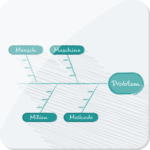
Cause and effect diagram
The cause and effect diagram (also named: Ishikawa diagram) is a classic tool in quality management and is applied for the determination of potential causes for a particular problem.
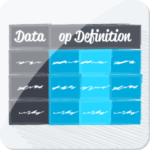
Data collection plan
The data collection plan serves as a tool to display structured requirements designed for the data collection considering the measurands for the data material and to display the specified measurements, processes and responsibilities for the implementation/execution of the measurements.
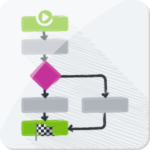
Flowchart
A flowchart visualizes work processes in a graphical form. It outlines consecutive work steps, events, interfaces, and responsibilities. Furthermore, the flowchart is applied to analyze an existing or to illustrate a new process.

Measurement matrix
A measurement matrix creates a structured approach to verify potential causes. In the matrix, possible influencing factors are matched with output measurement parameters. The goal is to identify the influencing factors with the likely largest effect on the output quantity and to further analyze them.

Problem decision program chart
The problem decision program chart organizes thoughts on existing or planned processes and illustrates the connections graphically, quickly, and clearly. To be able to do so, the process is broken down into substeps. Each problem that can arise within a substep is listed along with a possible solution.
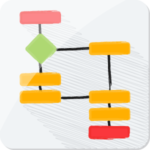
Process diagram
A process diagram is a graphical depiction of processes. It describes the temporal and logical order of single process steps and their links. This kind of depiction is often used in enterprises.
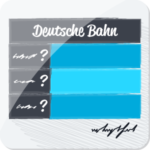
Response plan
The reaction plan is a tool created to react effectively to changes of process results. In the form of a table, it ensures that the people responsible react in a quick and primarily appropriate manner to changes with the right measures at the right time. This guarantees the correct fulfillment of customer needs.

Scatter plot
The scatter plot is a graphical depiction of the coherence of two characteristics. The characteristics are measured and entered as pairs of values.
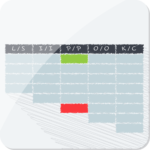
SIPOC
The process that is to be improved is visualised in a compact shape of roundabout five to seven steps. This leads to a unique perception within the team regarding the total scope of the process being examined. The project range is limited by clear and traceable definitions of the procedural steps and the interfaces towards suppliers and clients.

Swimlane
A swim lane is a visual element which is used in process flow diagrams or flowcharts to visualize the responsibilities for sub-processes of a business process.
